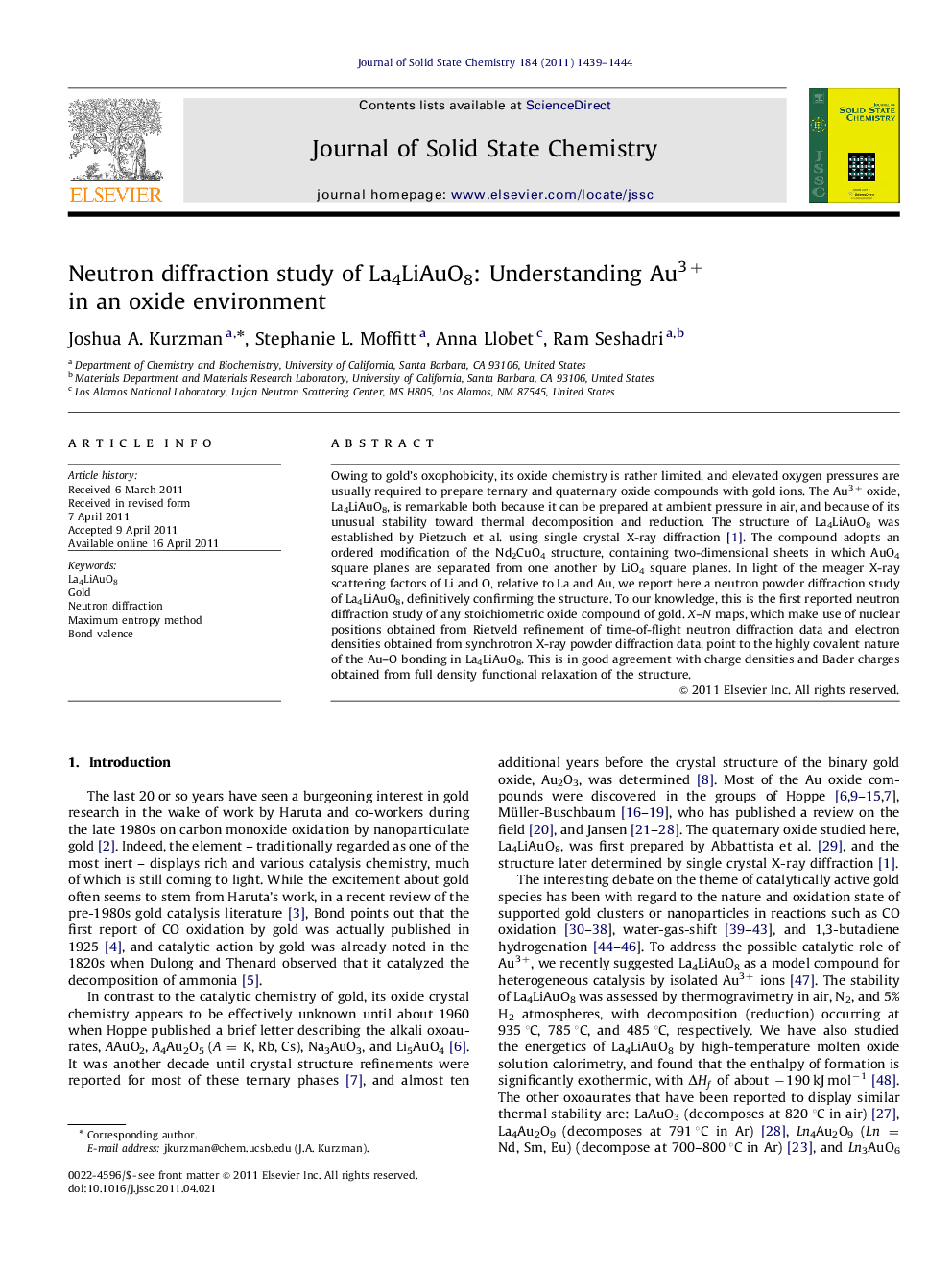| کد مقاله | کد نشریه | سال انتشار | مقاله انگلیسی | نسخه تمام متن |
|---|---|---|---|---|
| 1329120 | 978884 | 2011 | 6 صفحه PDF | دانلود رایگان |

Owing to gold's oxophobicity, its oxide chemistry is rather limited, and elevated oxygen pressures are usually required to prepare ternary and quaternary oxide compounds with gold ions. The Au3+ oxide, La4LiAuO8, is remarkable both because it can be prepared at ambient pressure in air, and because of its unusual stability toward thermal decomposition and reduction. The structure of La4LiAuO8 was established by Pietzuch et al. using single crystal X-ray diffraction [1]. The compound adopts an ordered modification of the Nd2CuO4 structure, containing two-dimensional sheets in which AuO4 square planes are separated from one another by LiO4 square planes. In light of the meager X-ray scattering factors of Li and O, relative to La and Au, we report here a neutron powder diffraction study of La4LiAuO8, definitively confirming the structure. To our knowledge, this is the first reported neutron diffraction study of any stoichiometric oxide compound of gold. X–N maps, which make use of nuclear positions obtained from Rietveld refinement of time-of-flight neutron diffraction data and electron densities obtained from synchrotron X-ray powder diffraction data, point to the highly covalent nature of the Au–O bonding in La4LiAuO8. This is in good agreement with charge densities and Bader charges obtained from full density functional relaxation of the structure.
We report a neutron powder diffraction study of La4LiAuO8; this is the first neutron diffraction study of any stoichiometric oxide compound of gold. X–N maps, which make use of nuclear positions obtained from Rietveld refinement of time-of-flight neutron diffraction data and electron densities obtained from synchrotron X-ray powder diffraction data, point to the highly covalent nature of the Au–O bonding in La4LiAuO8. This is in good agreement with charge densities and Bader charges obtained from density functional relaxation of the structure.Figure optionsDownload as PowerPoint slideHighlights
► Neutron diffraction study of Au3+ oxide La4LiAuO8.
► First neutron diffraction study of any oxide compound of gold.
► Experimentally determined charge densities indicate highly covalent Au–O bonding.
► DFT charge densities and Bader charges support experimental results.
Journal: Journal of Solid State Chemistry - Volume 184, Issue 6, June 2011, Pages 1439–1444